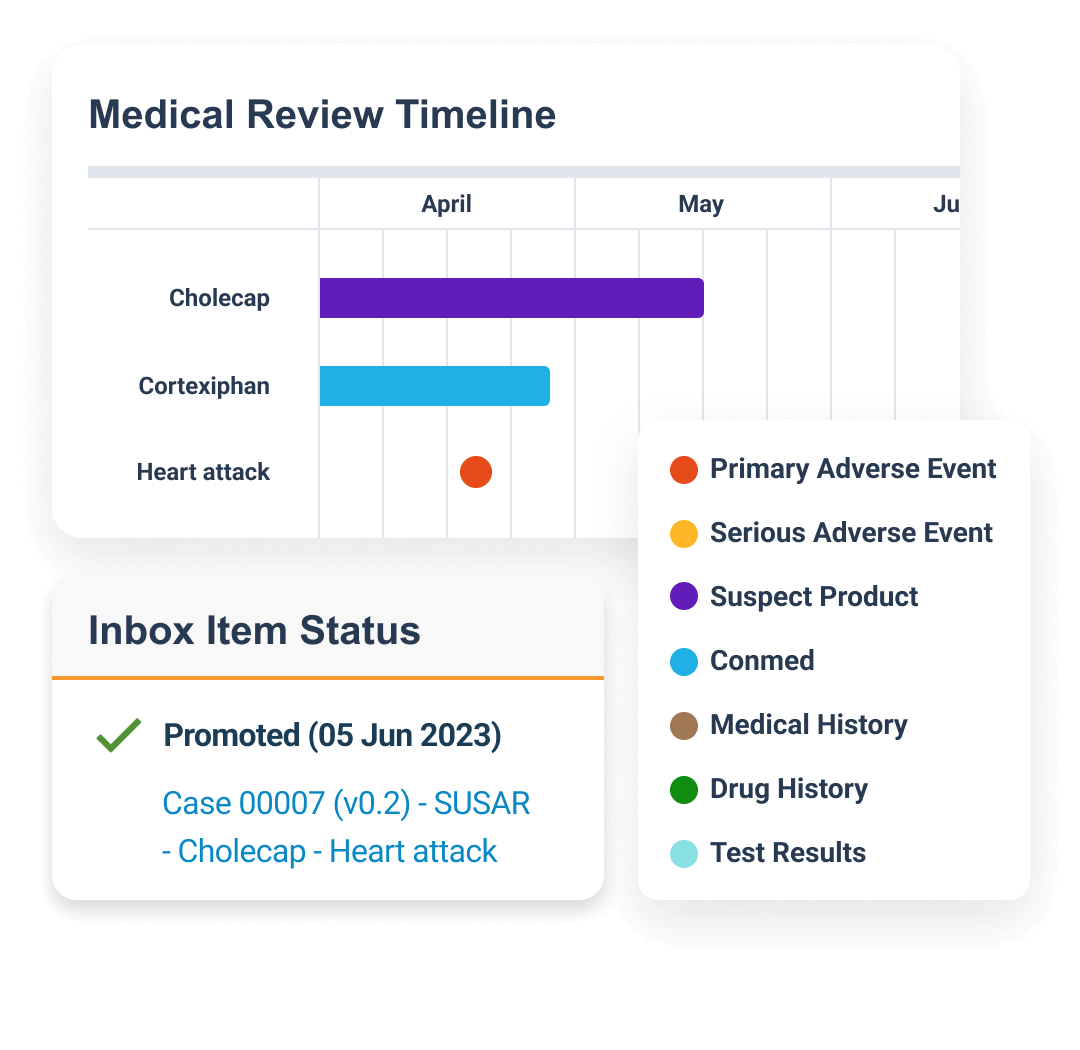Veeva Safety
포괄적인 글로벌
이상사례 관리
이상사례의 접수, 처리, 제출 및 관리 감독을
하나의 글로벌 최신 솔루션으로 처리하십시오.
Announced 2019
Status EARLY
Customers 51-100
Veeva Safety는 임상 및 시판 제품에 대한 이상사례의 접수, 처리 및 제출을 관리하는 현대적인 약물 안전 관리 시스템입니다.
임상시험 의뢰기관과 CRO는 단일 시스템에 기반하여 약물, 생물학적 제제, 백신, 의료기기 및 복합제품 관련 국내외 이상사례에 대한 작업을 수행할 수 있습니다. 내장된 게이트웨이를 통해 확보한 연결성을 바탕으로 이상 사례를 보건 당국에 제출 및 추적하고 협력업체에 배포합니다.
MedDRA, WHODrug 및 EDQM 업데이트를 일괄적으로 6개월마다 자동으로 수행합니다.

Veeva Safety를 선택해야 하는 이유
이상사례 관리 간소화
약물감시 관리 감독 개선
실시간 보고서 및 대시보드를 제공하며 파트너와의 원활한 협업을 통해 리스크 경감 및 컴플라이언스를 지원합니다.제출물 유입 간소화
효율성을 높이고 포괄적인 사례 접수, 처리 및 제출 프로세스를 자동화합니다.이상사례 및 케이스에 대한 글로벌 관점
약물, 생물학적 제제, 의료기기 및 복합제품과 관련한 전 세계 및 국내의 모든 이상사례 또는 케이스를 확인합니다.항상 최신 상태 유지
새로운 허가 요구 사항을 지원하거나 자동 업그레이드를 통해 최신 기능에 대한 접근성을 지원합니다.
